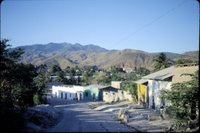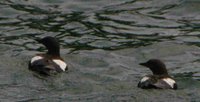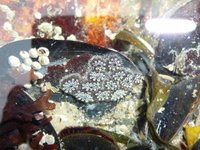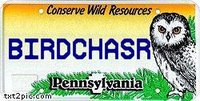 I'm off to Jocotan, Guatemala to do some ethnoornithology research with a Mayan linguist. Hope to post something from down there, but if not, I'll be back September 13. (photo:jocotan project)
I'm off to Jocotan, Guatemala to do some ethnoornithology research with a Mayan linguist. Hope to post something from down there, but if not, I'll be back September 13. (photo:jocotan project)
Swift Departures
20 hours ago
Birding. All the time.
Skin Design:
Free Blogger Skins
 I'm off to Jocotan, Guatemala to do some ethnoornithology research with a Mayan linguist. Hope to post something from down there, but if not, I'll be back September 13. (photo:jocotan project)
I'm off to Jocotan, Guatemala to do some ethnoornithology research with a Mayan linguist. Hope to post something from down there, but if not, I'll be back September 13. (photo:jocotan project)
By keeping bird feeders and birdbaths clean and by washing up thoroughly after servicing them, there is almost no way to contract H5N1. There is a much greater risk of tripping on your way out the door than there is of contracting avian flu or any other disease from backyard wild birds. The National Safety Council reports that trips and falls killed 16,000 Americans and sent more than 7 million others to the emergency room in 2003; less than 200 people across the globe have died from H5N1.

 Announced here. Follow the links to watch the Public Service Announcement here. Maybe a bit over the top scary, but for kids, an important message in some parts of the world. Some kids in Turkey died after playing with the heads of some slaughtered infected chickens, so maybe not a message we need here in the USA, but possibly critical elsewhere. Hopefully the kids will listen to Jackie Chan. He may do his own stunts, but isn't messing around with this bird flu!
Announced here. Follow the links to watch the Public Service Announcement here. Maybe a bit over the top scary, but for kids, an important message in some parts of the world. Some kids in Turkey died after playing with the heads of some slaughtered infected chickens, so maybe not a message we need here in the USA, but possibly critical elsewhere. Hopefully the kids will listen to Jackie Chan. He may do his own stunts, but isn't messing around with this bird flu!  Friday I flew to Denver and drove three and a half hours up to Mt. Princeton for the Audubon Colorado Rendezvous. A spectacular meeting place along a creek below the cliffs of the 14,000 foot peak. Most of my time was spent in meetings watching the storms roll in and out of the valley, but great to see some old friends like Clark's Nutcracker, Townsend's Solitaire, and Mountain Chickadee. Heard Red Crossbills flying over several times but never got on them. Something was messed up with my binoculars, and I couldn't get them to focus fast enough. I thought it might have been sand in the focusing mechanism, but they are OK again now that I'm back in Pennsylvania, so wondering if it had something to do with the pressurized binocular tubes and the high altitude? If anyone has had anything like this happen to their Zeiss 7x42 Dialyts, let me know! It was a pain since I was pretty sure I had a Black Swift going over at one point, but couldn't focus the bins fast enough to get on it!
Friday I flew to Denver and drove three and a half hours up to Mt. Princeton for the Audubon Colorado Rendezvous. A spectacular meeting place along a creek below the cliffs of the 14,000 foot peak. Most of my time was spent in meetings watching the storms roll in and out of the valley, but great to see some old friends like Clark's Nutcracker, Townsend's Solitaire, and Mountain Chickadee. Heard Red Crossbills flying over several times but never got on them. Something was messed up with my binoculars, and I couldn't get them to focus fast enough. I thought it might have been sand in the focusing mechanism, but they are OK again now that I'm back in Pennsylvania, so wondering if it had something to do with the pressurized binocular tubes and the high altitude? If anyone has had anything like this happen to their Zeiss 7x42 Dialyts, let me know! It was a pain since I was pretty sure I had a Black Swift going over at one point, but couldn't focus the bins fast enough to get on it!
 Nights in Maine are great for watching the skies. After a day of workshops, we enjoyed exploring the galaxy--and more distant galaxies--under amazingly dark skies. I've lived in the city too long, and it was great to watch the Perseid meteor showers, scope out the moons of Jupiter, and look at the Andromeda galaxy, as well as other deep sky objects in Sagitarius.
Nights in Maine are great for watching the skies. After a day of workshops, we enjoyed exploring the galaxy--and more distant galaxies--under amazingly dark skies. I've lived in the city too long, and it was great to watch the Perseid meteor showers, scope out the moons of Jupiter, and look at the Andromeda galaxy, as well as other deep sky objects in Sagitarius.  The best resource for learning the flight calls of migrant birds is online at oldbird.org. Get the CD. Its amazing and will open up a whole new world of night time birding. Fall migration is underway, so get a copy now. For another great view of the migration taking place each night, see the radar summaries at woodcreeper.com. Then head outside, hopefully to a dark spot away from city lights, and enjoy the celestial views of the sky and amazing sounds of the birds streaming overhead.
The best resource for learning the flight calls of migrant birds is online at oldbird.org. Get the CD. Its amazing and will open up a whole new world of night time birding. Fall migration is underway, so get a copy now. For another great view of the migration taking place each night, see the radar summaries at woodcreeper.com. Then head outside, hopefully to a dark spot away from city lights, and enjoy the celestial views of the sky and amazing sounds of the birds streaming overhead.
 What do you do at the Audubon Leadership Workshop after a day of watching puffins and eagles? Why, you enjoy my presentation on how birds see the world, of course! I like this presentation, as it is a lot of fun to figure out how birds see and interact with their world. I haven't given this presentation for a while, but I've now added a lot of info from recently published research, and I'm set to take it on the road again. Next stop for this show: Houston Audubon Society meeting on November 8. If you've ever wanted to know what it is like to be a bird, this is the presentation for you!
What do you do at the Audubon Leadership Workshop after a day of watching puffins and eagles? Why, you enjoy my presentation on how birds see the world, of course! I like this presentation, as it is a lot of fun to figure out how birds see and interact with their world. I haven't given this presentation for a while, but I've now added a lot of info from recently published research, and I'm set to take it on the road again. Next stop for this show: Houston Audubon Society meeting on November 8. If you've ever wanted to know what it is like to be a bird, this is the presentation for you!

 We might have seen more puffins, but there were four adult and three young Bald Eagles on the small island really stirring up the terns and gulls, so any other puffins in the area were probably smart to head out away from the island.
We might have seen more puffins, but there were four adult and three young Bald Eagles on the small island really stirring up the terns and gulls, so any other puffins in the area were probably smart to head out away from the island.  I am not the best on boats, especially when I keep my eyes glued to my binoculars looking for pelagic species. As we headed out, I told some folks that I wanted to see a Manx Shearwater. As we circled Eastern Egg Rock and the swells started to get to me, I kept up my vigil scanning the horizon with my binoculars while others watched the eagles. Finally, way off in the distance, I saw a shearwater skimming back and forth over the waves. Only a couple others were able to get on it before it disappeared, perhaps landing on the water. I was green, but I'd seen my bird!
I am not the best on boats, especially when I keep my eyes glued to my binoculars looking for pelagic species. As we headed out, I told some folks that I wanted to see a Manx Shearwater. As we circled Eastern Egg Rock and the swells started to get to me, I kept up my vigil scanning the horizon with my binoculars while others watched the eagles. Finally, way off in the distance, I saw a shearwater skimming back and forth over the waves. Only a couple others were able to get on it before it disappeared, perhaps landing on the water. I was green, but I'd seen my bird!
 On the second day of the Audubon Leadership Workshop at Hog Island, we took a break to explore the intertidal zone, or as I like to think of it, with over thirty species of invertebrates present, the Maine coast's great bird food larder.
On the second day of the Audubon Leadership Workshop at Hog Island, we took a break to explore the intertidal zone, or as I like to think of it, with over thirty species of invertebrates present, the Maine coast's great bird food larder. We also found two kinds of sea star. Here I am showing off my Blood Star (Henricia sp.), and we also found Northern Sea Stars (Asterias vulgaris). While these little guys are savvy hunters themselves, it isn't too uncommon to see gulls eating sea stars as well--especially the larger Glaucous Gull and Great Black-backed Gull. King Eiders also like to eat Asterias sea stars.
We also found two kinds of sea star. Here I am showing off my Blood Star (Henricia sp.), and we also found Northern Sea Stars (Asterias vulgaris). While these little guys are savvy hunters themselves, it isn't too uncommon to see gulls eating sea stars as well--especially the larger Glaucous Gull and Great Black-backed Gull. King Eiders also like to eat Asterias sea stars. Of course, everywhere on the rocks we found barnacles, as well as blue mussels (Mytilus edulis) and horse mussels (Modiolus modiolus). These bivalves are the favorite food of the Common Eiders that are so common in Muscongus Bay. The sea ducks dive down and rip these mussels from the rocks, eat them whole, and grind them up in their gizzards, then excrete the shells as crazy blue droppings. Other birds that feast on mussels include American Oystercatcher and Black Scoter.
Of course, everywhere on the rocks we found barnacles, as well as blue mussels (Mytilus edulis) and horse mussels (Modiolus modiolus). These bivalves are the favorite food of the Common Eiders that are so common in Muscongus Bay. The sea ducks dive down and rip these mussels from the rocks, eat them whole, and grind them up in their gizzards, then excrete the shells as crazy blue droppings. Other birds that feast on mussels include American Oystercatcher and Black Scoter. Rock eels (Pholis gunnellus) are the favorite food of the other most common Muscongus Bay bird--the Black Guillemot. We found a couple of these long fish--actually a gunnels--under rocks in the tide pools. The guillemots dive down and chase these fish among the rocks under water--a sight I'd love to see. Other birds that hunt these gunnels include Double-crested Cormorant, Great Cormorant, and Red-throated Loon.
Rock eels (Pholis gunnellus) are the favorite food of the other most common Muscongus Bay bird--the Black Guillemot. We found a couple of these long fish--actually a gunnels--under rocks in the tide pools. The guillemots dive down and chase these fish among the rocks under water--a sight I'd love to see. Other birds that hunt these gunnels include Double-crested Cormorant, Great Cormorant, and Red-throated Loon. My favorite animal of the day was probably the golden star tunicate (Botryllus schlasseri). We also found Sea Pork (Amaroucium stellatum) and white crusts (Didemnum sp.). I have to admit I've never seen a tunicate before, and I was quite taken by these strange little animals. The golden star tunicates are introduced from Europe, and I have no idea if any birds actually eat these little colonies since they are rather firmly attached to the rocks, but they are quite pretty and its possible that the free-swimming forms may be eaten by birds at sea.
My favorite animal of the day was probably the golden star tunicate (Botryllus schlasseri). We also found Sea Pork (Amaroucium stellatum) and white crusts (Didemnum sp.). I have to admit I've never seen a tunicate before, and I was quite taken by these strange little animals. The golden star tunicates are introduced from Europe, and I have no idea if any birds actually eat these little colonies since they are rather firmly attached to the rocks, but they are quite pretty and its possible that the free-swimming forms may be eaten by birds at sea. After checking out the littoral bird food, we waded out to do some sceining. This brought in lots of three spined sticklebacks (Gasterosteus aculeatus), Atlantic silversides (Menidia menidia), bent mysids (Praunus flexuosus), and grass shrimp (Hippolyte sp.). Common Terns frequently take all of these species, as do many other species feeding in shallow water--including Snowy Egret and Brown Pelican. We also managed a medium sized sculpin (Cottidae sp.)--a fish favored by loons, mergansers, cormorants, and even Great Black-backed Gulls.
After checking out the littoral bird food, we waded out to do some sceining. This brought in lots of three spined sticklebacks (Gasterosteus aculeatus), Atlantic silversides (Menidia menidia), bent mysids (Praunus flexuosus), and grass shrimp (Hippolyte sp.). Common Terns frequently take all of these species, as do many other species feeding in shallow water--including Snowy Egret and Brown Pelican. We also managed a medium sized sculpin (Cottidae sp.)--a fish favored by loons, mergansers, cormorants, and even Great Black-backed Gulls.  After a couple hours of exploration, it was clear that the world is a marvelous place full of strange creatures...and that there is a lot for birds to eat where water meets shore.
After a couple hours of exploration, it was clear that the world is a marvelous place full of strange creatures...and that there is a lot for birds to eat where water meets shore.
 Arriving at Hog Island for the Audubon Leadership Workshop for Audubon chapter leaders, it was good to be back in the land of the Black Guillemot and Common Eider. These birds are fairly common close to shore here, and we saw dozens of them on the short boat tour on our first morning at the camp. We also got good looks at a Bald Eagle nest, as well as an Osprey nest, and diving Common Loons. Hog Island has a lot of great birds, and I spotted 63 species during the week, missing several others seen by workshop participants when I wasn't around--like when I was tanking up on the amazing homemade dishes served at every meal! Fresh air, spectacular scenery, great food, fantastic birds, good company...now that's a recipe for a good time--especially when you get the discounted Audubon rate! The Audubon Leadership Workshop may be the best kept secret in Audubon.
Arriving at Hog Island for the Audubon Leadership Workshop for Audubon chapter leaders, it was good to be back in the land of the Black Guillemot and Common Eider. These birds are fairly common close to shore here, and we saw dozens of them on the short boat tour on our first morning at the camp. We also got good looks at a Bald Eagle nest, as well as an Osprey nest, and diving Common Loons. Hog Island has a lot of great birds, and I spotted 63 species during the week, missing several others seen by workshop participants when I wasn't around--like when I was tanking up on the amazing homemade dishes served at every meal! Fresh air, spectacular scenery, great food, fantastic birds, good company...now that's a recipe for a good time--especially when you get the discounted Audubon rate! The Audubon Leadership Workshop may be the best kept secret in Audubon.
 Finally, I ran into some local folks who told me I was right in the middle of the best place for the sparrows (the north end of Eastern Road near the pans), and eventually with their scope, I was able to see a couple birds. Both Nelson's and Saltmarsh Sharp-tailed Sparrows are here, and this time of year many of the birds are youngsters--making it a bit tricky to identify them as they pop up briefly in the middle of the marsh. However, I was lucky enough to see at least one that seemed to be a good Saltmarsh Sharp-tailed Sparrow based on breast streaking and gray cheek. I also saw one really, really pale young Nelson's, and several others that had to go unidentified. The birds didn't really fit my previous search image of them based on field guide illustrations. Much more flat-headed, long-billed, and much less colorful then I expected. Field guides don't always do it for you, so there's nothing like in-the-field experience with birds to help you really become familiar with them. I left wanting to spend much more time getting to know these guys. Hopefully next time I'm in their range I'll have more time to really study these strange little birds (photo: ctbirding.org).
Finally, I ran into some local folks who told me I was right in the middle of the best place for the sparrows (the north end of Eastern Road near the pans), and eventually with their scope, I was able to see a couple birds. Both Nelson's and Saltmarsh Sharp-tailed Sparrows are here, and this time of year many of the birds are youngsters--making it a bit tricky to identify them as they pop up briefly in the middle of the marsh. However, I was lucky enough to see at least one that seemed to be a good Saltmarsh Sharp-tailed Sparrow based on breast streaking and gray cheek. I also saw one really, really pale young Nelson's, and several others that had to go unidentified. The birds didn't really fit my previous search image of them based on field guide illustrations. Much more flat-headed, long-billed, and much less colorful then I expected. Field guides don't always do it for you, so there's nothing like in-the-field experience with birds to help you really become familiar with them. I left wanting to spend much more time getting to know these guys. Hopefully next time I'm in their range I'll have more time to really study these strange little birds (photo: ctbirding.org).
 I just got back from a week in Maine (details forthcoming), and wasn't able to check online before I drove home...which is why I drove right past the $^@& Western Reef Heron that is being seen just off I-95 at Kittery Point in southern Maine. About once a year I miss a super spectacular bird by not being plugged in 24-7. Ouch! (photo: Surfbirds)
I just got back from a week in Maine (details forthcoming), and wasn't able to check online before I drove home...which is why I drove right past the $^@& Western Reef Heron that is being seen just off I-95 at Kittery Point in southern Maine. About once a year I miss a super spectacular bird by not being plugged in 24-7. Ouch! (photo: Surfbirds)
 In 10 years of living in Texas, I waited in vain for one of these guys to show up again so I could chase it for my ABA list. Now that I'm in Pennsylvania, sure enough one is now hanging out in Estero Llano Grande State Park in Weslaco, Texas. Such is life. (photo: Erik Breden)
In 10 years of living in Texas, I waited in vain for one of these guys to show up again so I could chase it for my ABA list. Now that I'm in Pennsylvania, sure enough one is now hanging out in Estero Llano Grande State Park in Weslaco, Texas. Such is life. (photo: Erik Breden)

 Imagine a 200 day 40,000 mile trip around the Pacific Ocean from California, to Japan, to New Zealand, and back again. Throw in some nice 180 foot deep ocean dives. Lots of good seafood. Now imagine doing that every year of your 30 year life. And you only weigh a pound and a half. Welcome to the world of the Sooty Shearwater. Check out this BBC report on a recent study tracking the migration of these birds. On this map the blue lines are breeding season movements, yellow is the northward journey, and orange lines are winter (our summer) movements and the journey back south. Simply amazing.
Imagine a 200 day 40,000 mile trip around the Pacific Ocean from California, to Japan, to New Zealand, and back again. Throw in some nice 180 foot deep ocean dives. Lots of good seafood. Now imagine doing that every year of your 30 year life. And you only weigh a pound and a half. Welcome to the world of the Sooty Shearwater. Check out this BBC report on a recent study tracking the migration of these birds. On this map the blue lines are breeding season movements, yellow is the northward journey, and orange lines are winter (our summer) movements and the journey back south. Simply amazing.
 So, somebody wants to put a wind farm in your backyard. Maybe you want it, maybe you don't. Then somebody comes along and says that it might kill lots of birds. So, what do you do? How many birds get killed by windmills, anyway?
So, somebody wants to put a wind farm in your backyard. Maybe you want it, maybe you don't. Then somebody comes along and says that it might kill lots of birds. So, what do you do? How many birds get killed by windmills, anyway? Well, I'm not getting much traveling in lately, but my 2006 yard list is currently #2 in the state of Pennsylvania. OK, that's second place in the urban yard category. But, hey...you work with what you got. Latest addition--two Purple Martins seen about a quarter mile away across the creek. As long as I can see it from my yard, its in!
Well, I'm not getting much traveling in lately, but my 2006 yard list is currently #2 in the state of Pennsylvania. OK, that's second place in the urban yard category. But, hey...you work with what you got. Latest addition--two Purple Martins seen about a quarter mile away across the creek. As long as I can see it from my yard, its in!
